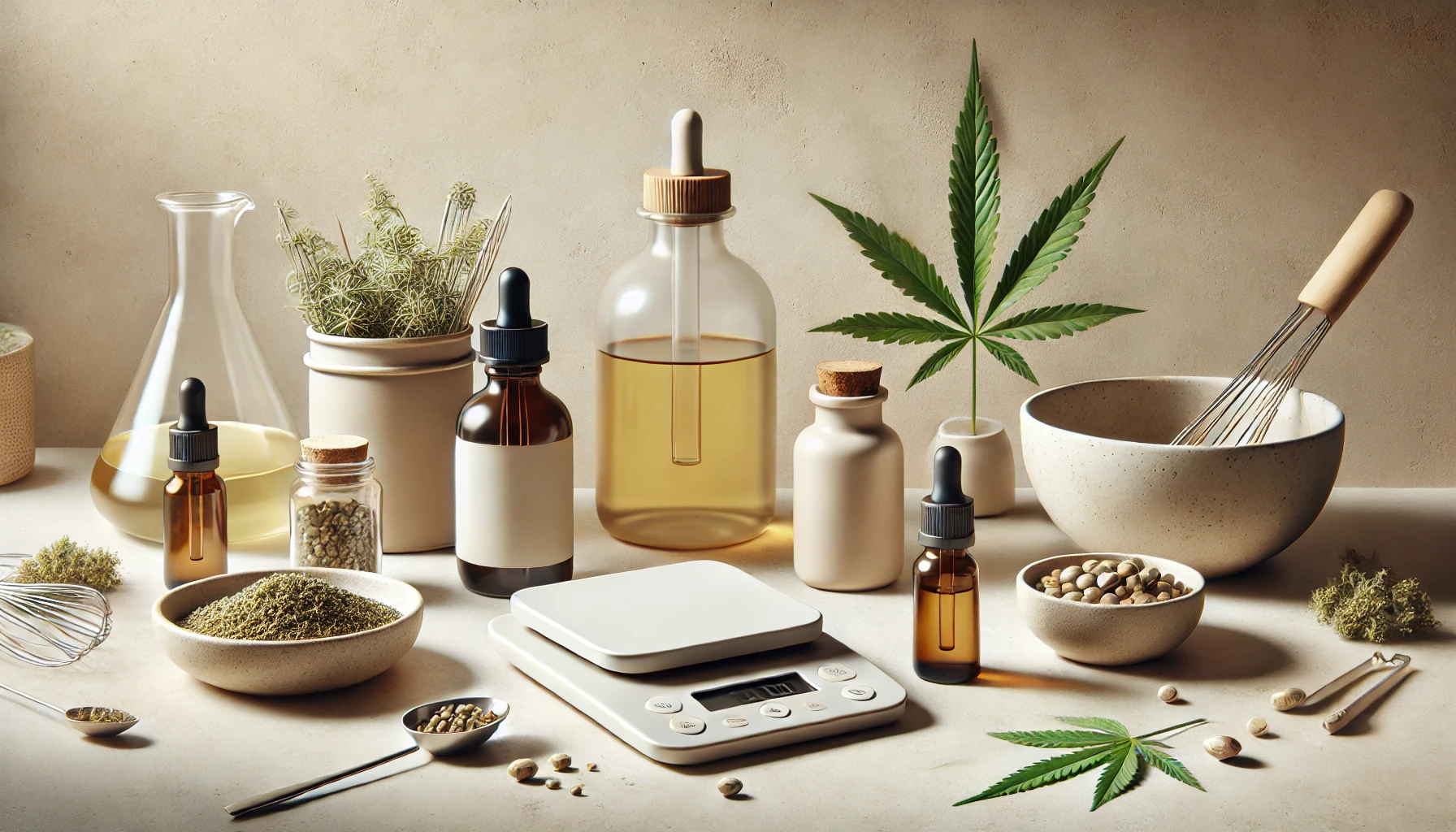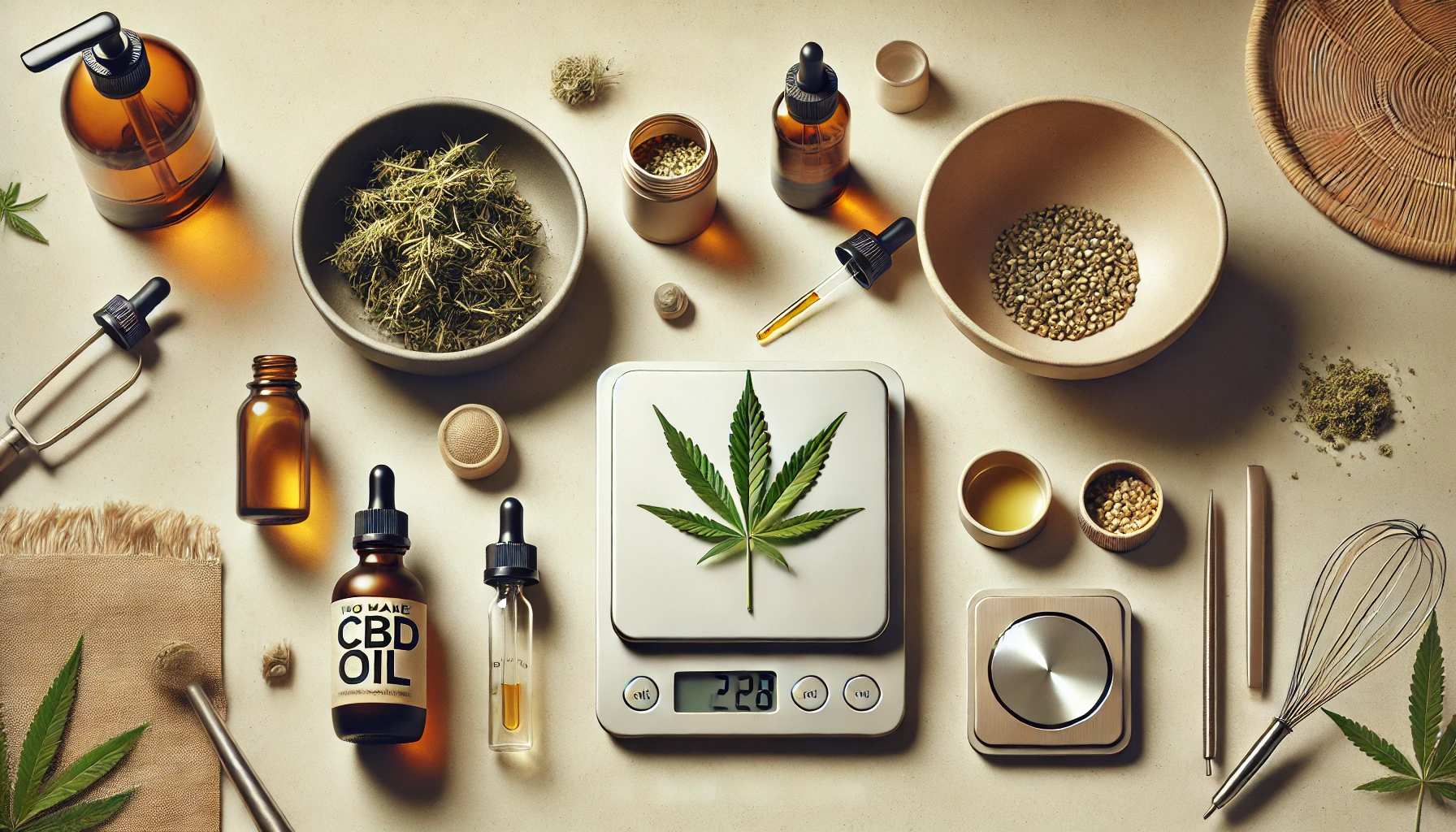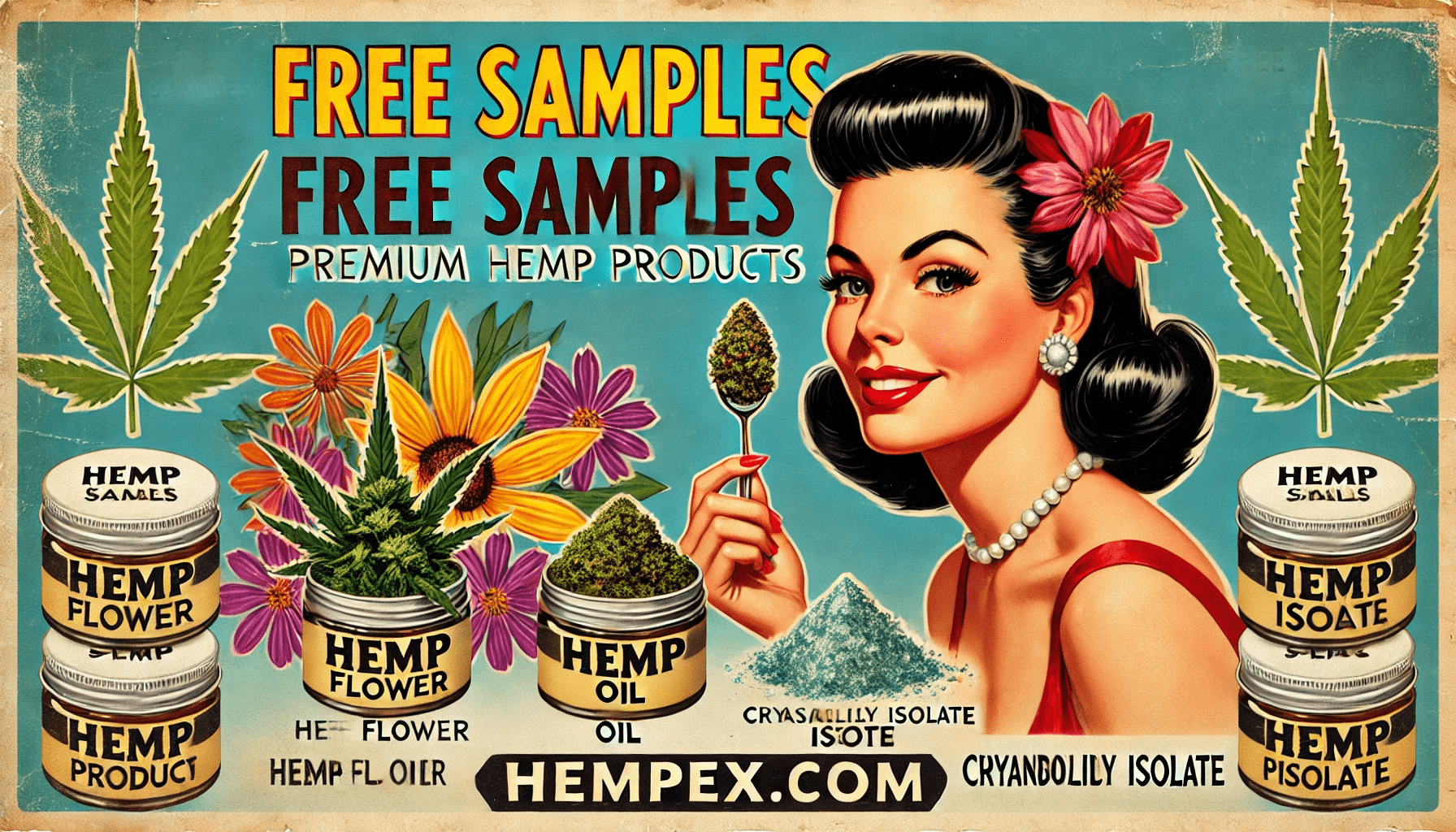How to Make CBD Oil Tinctures at Home with a Hemp Extract and a Carrier Oil
Excerpt: Making CBD oil tinctures at home is a simple, cost-effective way to enjoy the benefits of CBD. This guide covers everything you need to know to create your own tinctures with hemp extract and a carrier oil, including potency calculations and tips on selecting the right CBD extract.
Introduction
CBD tinctures are a popular and effective way to experience the benefits of CBD. Making your own CBD oil tincture at home allows you to control the potency and choose the best ingredients for your needs. This guide will walk you through the basics of making a CBD oil tincture using a hemp extract and a carrier oil, like hemp seed oil or MCT oil.
What You’ll Need
- CBD Extract: You can use CBD isolate, full-spectrum extract, or broad-spectrum extract, depending on your preferences.
- Carrier Oil: Common options include hemp seed oil, MCT oil, olive oil, and avocado oil.
- Tools: Dropper bottles, a digital scale, a small funnel, a mixing bowl, and a stirring utensil.
Step-by-Step Instructions
Step 1: Measure Your Ingredients
To make a tincture, you need to calculate the desired potency. Let’s start with a standard concentration, such as 100 mg of CBD per milliliter (ml). Here’s a quick guide on how to calculate potency for different types of extracts.
Step 2: Calculating Potency
The easiest way to control potency is to use CBD isolate, which is nearly pure CBD. To make a tincture with a potency of 100 mg/ml, simply multiply the amount of CBD isolate (in grams) by 1000 to get the milligrams of CBD. For example:
If you want a 30 ml tincture at 100 mg/ml potency: 30 ml x 100 mg = 3000 mg of CBD So, you would need 3 grams of CBD isolate to reach this potency.
Using Full-Spectrum Extracts
Full-spectrum extracts contain a blend of cannabinoids, so calculating potency is a bit more complex. For example, if you have a full-spectrum extract that contains 50% CBD, you would multiply the weight of the extract by its purity:
For a 30 ml tincture with 100 mg/ml total cannabinoids: 30 ml x 100 mg = 3000 mg of total cannabinoids required 3000 mg / 0.5 (50% CBD) = 6 grams of extract
This calculation assumes all cannabinoids are counted towards potency. Full-spectrum extracts also contain other beneficial compounds like minor cannabinoids and terpenes, which contribute to the “entourage effect.”
Step 3: Combine Your Ingredients
In a mixing bowl, combine the CBD isolate or full-spectrum extract with your chosen carrier oil. Stir thoroughly until fully mixed. If you’re using CBD isolate, it should dissolve completely into the oil. For best results, ensure your CBD extract is evenly distributed.
Step 4: Transfer to Dropper Bottles
Using a small funnel, carefully pour your tincture into dropper bottles. Label each bottle with the date and potency. Store your tincture in a cool, dark place to preserve its potency and freshness.
Tips on Choosing the Right Extract
CBD isolates are perfect for THC-free tinctures with precise potency. Full-spectrum extracts are ideal for those who want the benefits of multiple cannabinoids and the entourage effect. Broad-spectrum extracts offer a THC-free option while retaining other beneficial cannabinoids.
Conclusion
Making CBD oil tinctures at home is easy and allows you to customize the potency and ingredients to suit your needs. By understanding potency calculations and the benefits of different extracts, you can create high-quality tinctures tailored to your wellness goals. Ready to get started? Gather your ingredients and enjoy the benefits of DIY CBD tinctures!



